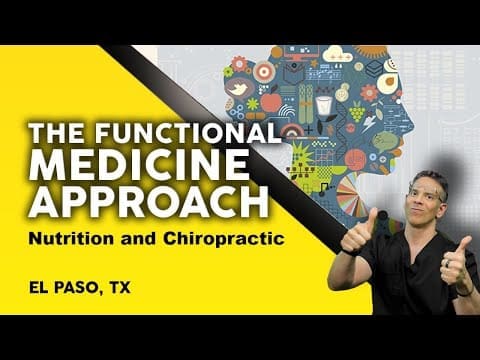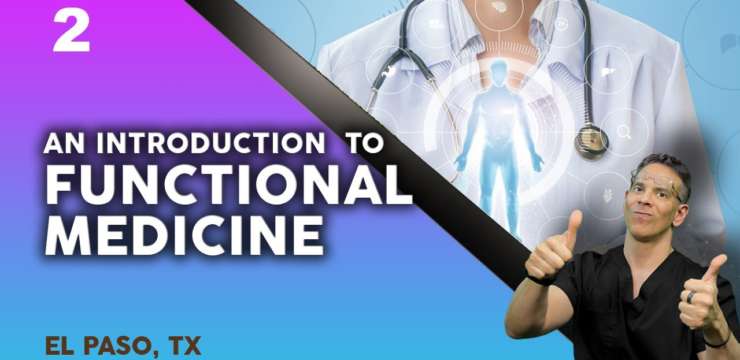The classification criteria for fibromyalgia have changed over time, affecting its definition from a “peripheral pain-defined disease” to a “systemic symptom-based disease.” Indeed, the ACR-2010…

Nutrition and Wellness go hand in hand. Food provides people with the necessary energy and nutrients to be healthy and for their bodies to perform optimally. By eating a variety of colorful foods, including good quality vegetables, fruits, whole-grain products and lean meats, the body can replenish itself with the essential macronutrient (proteins, carbohydrates, fats) and micronutrients (vitamins and minerals) to function effectively. Healthy eating does not have to be hard. The key is to eat a variety of foods, which include vegetables, fruits, and whole-grains. Eat lean meats, poultry, fish, beans, and low-fat dairy products and drink about half your body weight in ounces of water. Limit salt, sugar, alcohol, saturated fat, and trans fat. Saturated fats usually come from animals. Look for trans fat on the labels of processed foods, margarines, and shortenings. Dr. Alex Jimenez and his health coach offer nutritional examples as well as describe the importance of a balanced nutrition throughout this series of articles, emphasizing how a proper diet combined with physical activity can help individuals reach and maintain a healthy weight, reduce their risk of developing chronic diseases like heart disease, and ultimately promote overall health and wellness.

The classification criteria for fibromyalgia have changed over time, affecting its definition from a “peripheral pain-defined disease” to a “systemic symptom-based disease.” Indeed, the ACR-2010…

On today’s podcast Dr. Jimenez DC, health coaches Adriana Caceres and Faith Arciniaga, and nutritionist Ana Paola RodrÃguez will discuss how the intracellular Body Water…

For an appointment please call: 915-412-6790 Fill your evaluation form online: dralexjimenez.livingmatrix.com/self_register_patients/new – If you have enjoyed this video and/or we have helped you in…

For an appointment please call: 915-412-6790 Fill your evaluation form online: dralexjimenez.livingmatrix.com/self_register_patients/new – If you have enjoyed this video and/or we have helped you in…

Improving mitochondrial function can be done through different mechanisms. Indeed, the use of supplements, cold showers, exercise, and even when we ingest our meals directly…

Dr. Alexander Jimenez, Adriana Caceres, Faith Arciniega (Health Coach), Amparo Armendáriz-Pérez (Massage Therapist) and Ana RodrÃguez Arciniega talk about the Functional Medicine and holistic treatments…

Welcome to this new functional Medicine presentation, where an expert will be discussing Anthropometrics, Biomarkers, cLINICAL assessment and diet evaluation. Stay tuned for the next…

We want to welcome you to our newest functional Medicine presentation, where an expert will be discussing the fundamentals of prescribing an Elimination Diet. Stay…

Thermogenesis and metabolic homeostasis work hand in hand, thanks to BAT’s proper function. Indeed, BAT can metabolize nutrients, such as glucose and fatty acids, and…

In this episode, Dr. Alex Jimenez brings to you this presentation titled “An Introduction to Functional Medicine” where Medical Specialist will help us distinguish the…
Adipocytes have extraordinary capacities and functions that promote homeostasis. Different adipocytes, such as white adipose tissue (WAT) and brown adipose tissue (BAT), possess multiple functions…

Welcome to our new Functional Medicine presentation where an expert will be talking to us about case management of Allergic and Atopic Diseases in depth.…

Welcome to our new Functional Medicine presentation where an expert will be talking to us about case management of Autoimmune diseases and also covering some…

The mitochondrion is a (THE) vital cellular organelle that orchestrates multiple metabolical pathways. Therefore, while we eat to produce energy, create connections, and receive information,…

Welcome to our new Functional Medicine presentation where an expert will talk to us about Clinical Implementation of Functional Nutrition. Following this activity, participants would…

Welcome to our new Functional Medicine presentation where an expert will talk to us about Clinical Implementation of Functional Nutrition. Following this activity, participants would…

Welcome to our new Functional Medicine presentation where an expert will talk to us about Clinical Implementation of Functional Nutrition. Following this activity, participants would…